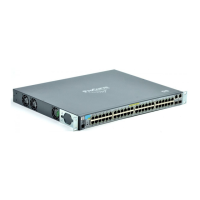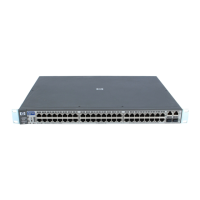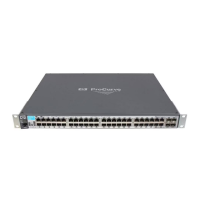Port Trunking
Port Status and Configuration
On the 2610-24 switch you can configure up to twelve port trunk groups having
up to eight links each (with additional standby links if you’re using dynamic
LACP). On the 2610-48 switch you can configure up to twenty-four port trunk
groups having up to eight links each. You can configure trunk group types as
follows:
Trunk Type Trunk Group Membership
TrkX (Static) DynX (Dynamic)
LACP Yes Yes
Trunk Yes No
Note Trunks configured as FEC (Fast Ethernet Channel) are not supported. To
configure port trunk groups, use static or LACP trunks. For release notes
describing the latest software updates, visit the ProCurve Networking website
at www.procurve.com. Click on Technical support, and then click on
Product manuals.
The following examples show how to create different types of trunk groups.
Configuring a Static Trunk or Static LACP Trunk Group.
For the 2610-24 switch:
Syntax: trunk <port-list> < trk1 ... trk12 > < trunk | lacp >
For the 2610-48 switch:
Syntax: trunk <port-list> < trk1 ... trk24 > < trunk | lacp >
The following example uses ports C4 - C6 to create a non-protocol static trunk
group with the group name of Trk2.
ProCurve(config)# trunk c4-c6 trk2 trunk
Removing Ports from a Static Trunk Group. This command removes
one or more ports from an existing Trkx trunk group.
Caution Removing a port from a trunk can result in a loop and cause a broadcast storm.
When you remove a port from a trunk where STP is not in use, ProCurve
recommends that you first disable the port or disconnect the link on that port.
Syntax: no trunk < port-list >
This example removes ports C4 and C5 from an existing trunk group.
12-13
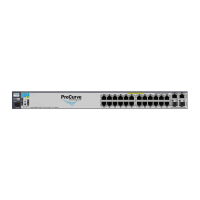
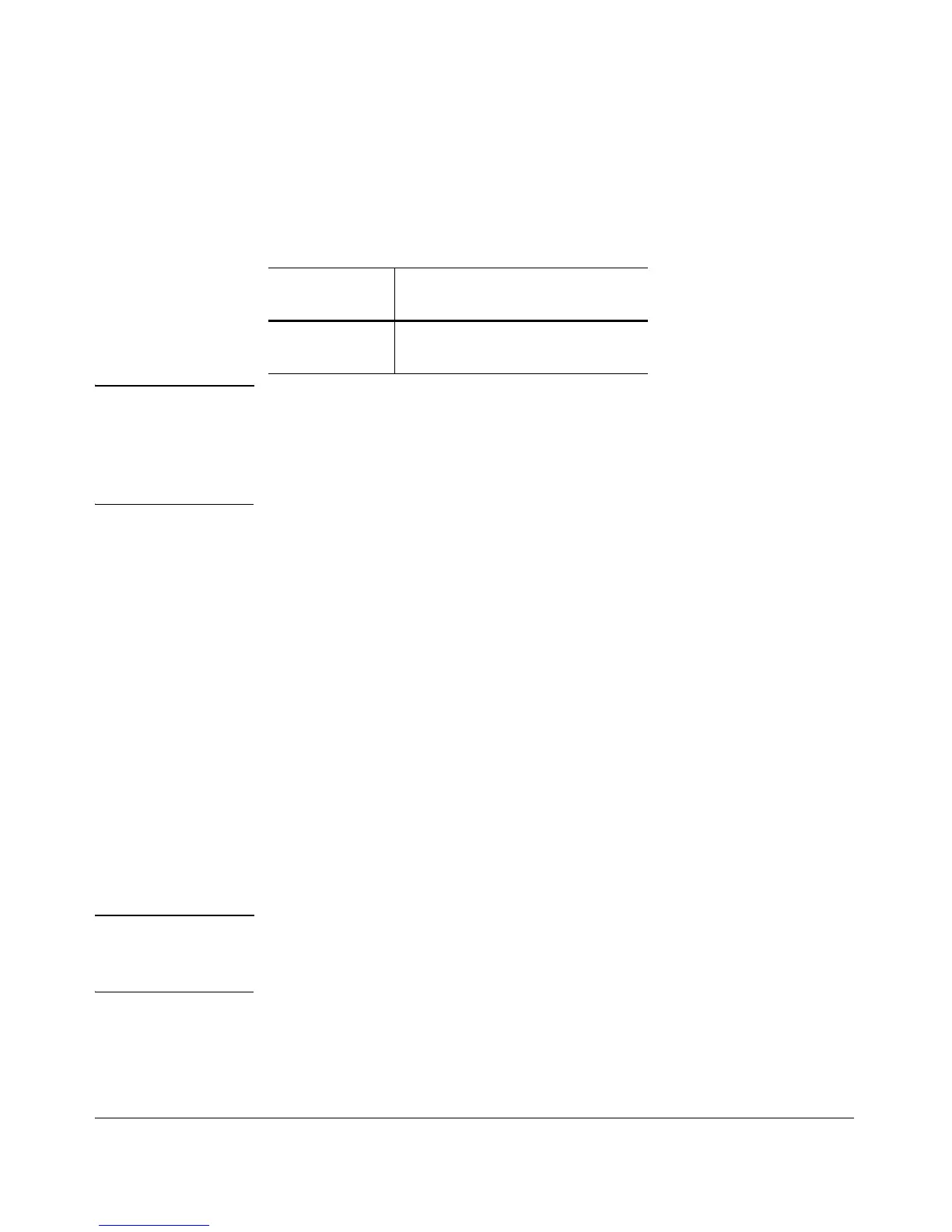